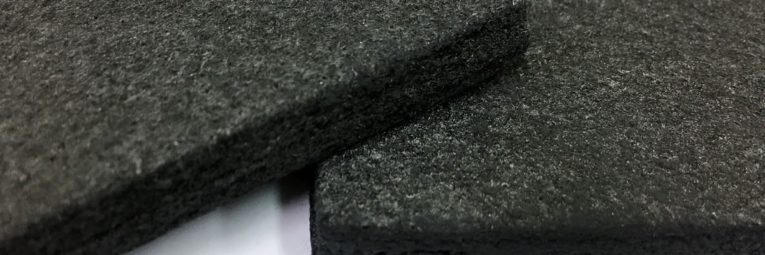
- Home
- All Posts
- Battery Material
- Bipolar Plate
- Electrode Materials of VRFB
Blog

Electrode Materials of VRFB
Electrode materials for VRFB can be divided into two groups: metal electrodes and carbon electrodes. Because metal electrodes have bad reversibility on electrochemistry, high cost and easy to form passivating film, they are not proper for large-scale battery energy storage system. Due to their good conductivity, stability and relative low cost, the carbon material electrodes are commonly used as the electrodes of VRFB.
Metal electrode for VRFB
Metal electrode materials have advantages of strong conductivity, low resistance and high mechanical strength. In the early stage of VRFB development, gold, titanium, lead, titanium based platinum and titanium based iridium oxide were took as of object of study. Researchers used a series of methods to study the structure, properties and electrochemical behavior of these types of electrode materials. The experimental results indicate that the gold and lead electrodes show poor reversibility in the reaction, especially lead, which forms a layer of lead oxide passivation film on the surface during the operation of flow battery, the result is that the metal electrode and electrolyte can’t be in good contact and hinder the process of electrode reaction.
When studying the electrochemical behavior of vanadium battery with titanium as electrode, it was found that compared with gold and lead electrodes, its reversibility was improved but a similar passivation film also formed on the surface of titanium, and unfavorable for the reaction. Then, a similar study was carried out on titanium based platinum and iridium oxide. It was found that the reaction of titanium based platinum electrode showed good conductivity and iridium oxide electrode had good electrochemical reversibility. After cyclic voltammetry and charge and discharge circulation ratio tests, the electrode surface had no obvious change and the performance was relatively stable. However, iridium and platinum are relatively expensive and difficult to be applied in large-scale production. For electrode materials, VRFB system has high requirements on stability, conductivity, electrochemical activity and application cost, and metal electrode materials are hard to meet these basic conditions at the same time, so it is urgent to find another feasible Vanadium battery electrode material.
Carbon electrode for VRFB
Common carbon electrode materials mainly include glassy carbon, carbon paper, graphite felt, graphite rod, and other carbon fibers. In order to increase the contact area between electrolyte and electrode, porous materials such as carbon felt or graphite felt are attached to the surface of the bipolar plate. Carbon/graphite felt not only have excellent conductivity, but also have very large specific surface, which greatly increases the effective reaction area of the battery electrode for VRFB.
Graphite felt is a kind of material made of countless carbon fibers. The inner part is relatively loose and has many pores, which makes its real area much larger than the outer geometric surface area. This property of graphite felt provides a larger reaction area for vanadium electroreaction. In addition, graphite felt also has properties of high temperature resistance, corrosion resistance, high stability and good mechanical strength, which is also an important reason why graphite felt is often used as the electrode material for VRFB. The conductive felt applied to the electrode of vanadium battery requires high acid resistance, high wettability to the electrolyte of vanadium battery and high electrochemical activity. Therefore, the conductive felt applied to the electrode material of the vanadium battery should be treated first. Graphite felt and carbon felt are two products with different firing temperatures. Graphite felt with high firing temperature and high graphitization degree, carbon felt with lower firing temperature and relatively low graphitization degree. The significant difference between the two conductive felts is the cost. Graphite felt/carbon felt is mainly divided into polyacrylonitrile based and viscose based according to different raw materials. Polyacrylonitrile based conductive felts are cheaper, and viscose based conductive felts are more expensive.
Electrode material is one of the key technologies that affect and restrict the performance of vanadium redox flow battery. In terms of function, the electrode materials of VRFB system is different from electrode materials of common chemical power supply. The electrode of common chemical power supply participates in the battery reaction as a reactant, and its amount continuously changes with the progress of the reaction. The electrode material of VRFB is used for electron transferring and ion conversion on its surface. Generally speaking, it mainly plays the role of conducting electricity and offering an place for reaction. Some hydrophobic groups contained on the surface of carbon electrode materials lead to poor hydrophilicity and adsorption, which hinders the delivering of active electric in electrolyte solution. The selection of electrode active materials and the optimization methods for their modification need to be further studied.
About Mr. Zhou
Search
Recent Posts
-
Manufacturing Process of Ca... 11/28/2024
-
Application of Flexible Gra... 05/14/2024
-
PEM Water Electrolysis for ... 04/12/2024
-
Application of Bipolar Memb... 01/09/2024
-
Membrane Electrode Assembly... 11/27/2023
Categories
- All Posts (24)
- Flow Battery (11)
- Battery Material (20)
- Bipolar Plate (13)
- Membrane (3)
- Felt Electrode (1)
- MEA (3)
- Fuel Cell (5)
Contact Info.
Recent Post
-
Manufacturing Process of Ca... 11/28/2024
-
Application of Flexible Gra... 05/14/2024
-
PEM Water Electrolysis for ... 04/12/2024
-
Application of Bipolar Memb... 01/09/2024
-
Membrane Electrode Assembly... 11/27/2023


